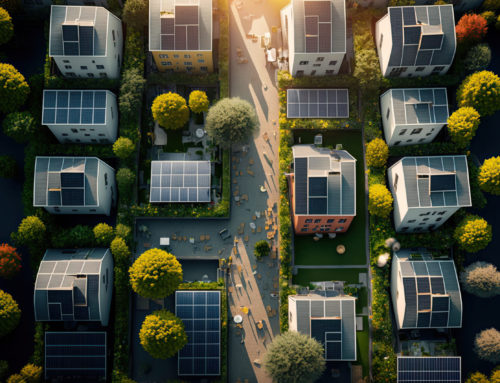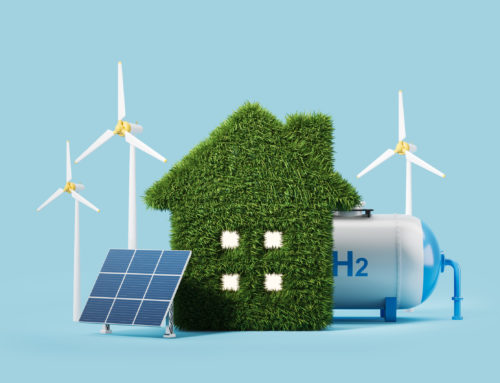Adopted from publication „Towards a green and digital future. Key requirements for successful twin transitions in the European Union“, Luxembourg: Publications Office of the European Union, 2022, ISBN: 978-92-76-52451-9
Residential and office buildings occupy the largest share of the built-up area in the EU, with up to 75%, and are therefore key to the green transition. Buildings have a long lifespan and it is predicted that 85-95% of buildings in Europe will still be in regular use by 2050. Because of this, circularity is an important aspect, which includes renovation, retrofitting and demolition of buildings.
The future of the building stock is facing many changes. The war in Ukraine has increased prices and reduced the availability of building materials in Europe. Add to this the ageing population, changing household structures and urbanisation, which are causing changes in patterns of demand for living space. Affordable housing, energy poverty and limited capacity to implement digital technologies will be serious challenges for the construction sector in the near future, with digitalisation representing an opportunity to accelerate the green transition of the construction sector.
The first and most obvious advantage is through efficiency improvements in systems management such as more efficient building operations and construction processes. Second advantage is through monitoring and tracking regarding the environmental impact of materials, including life cycle analysis and options for reducing environmental impacts through various actions. Third advantage is that information and communication technologies can support a more intense use of existing buildings, for example by supporting sharing of office space that would otherwise have remained empty, thus reducing the need for new constructions. A fourth, but not last, advantage is when digitalisation replaces space needs entirely through virtualisation, for example with online banking and shopping making spaces for customers obsolete.
The digitalisation of the green transition process is based on 5 fundamental pillars:
- Low-carbon and resilient construction are important drivers for greening in new buildings. Green architecture, engineering, and construction require information on the embodied grey energy in buildings (i.e. the energy associated with production). They need to consider several characteristics of the materials and components used, such as their energy efficiency performance, potential for repair, and end-of-life treatment. Building design and construction methods need to integrate resilience to possible extreme events to avoid premature decay or loss of functionality. Digital tools can help to address this in the design phase. For example, building information modelling can analyse long-term consequences of design choices and can help to decrease environmental impact in both the construction and use phases. One Stop Shops can support users in the complex decision-making processes and arrange related services like such as financing.
- Retrofitting will be key to makeing existing buildings greener. Keeping as many structural elements as possible means retaining the grey energy embodied in building material. Thermal and acoustic insulation and air tightness of the building envelope are crucial for deep renovations. Introducing new and efficient space heating and cooling systems with smart technologies for building automation and control systems is another key element. Digital tools like digital building logbooks can ease renovation, retrofitting, and recyclability of materials from old buildings.
- Reduced energy use during operation can provide a stabilising function to the overall energy system. Heating, cooling, ventilation, and lighting systems can be adaptively managed to reduce energy consumption while maintaining the same level of comfort for inhabitants. Building automation and control systems are based on sensors that recognise the building’s users and their requirements, and help to actively manage energy-consuming appliances.
- Low-carbon heating and cooling reduces emissions and pollution during the use phase of a building. Electrification (e.g. using heat pumps instead of oil or gas heating) is key for sustainable heating. In addition, building-added or -integrated solar PV is a renewable electricity source with high potential for the future.
- Reduced demand for building space decreases environmental impacts from constructing and operating buildings. Options to cut building space include reducing the need for space use and increasing the usage intensity in existing buildings. Digital platforms can enable smoother sharing of space. Lastly, tiny houses and micro apartments also provide options for reduced need for space.






